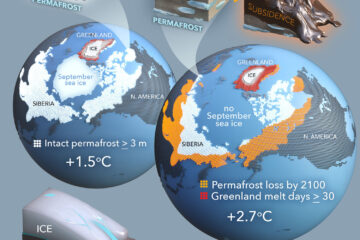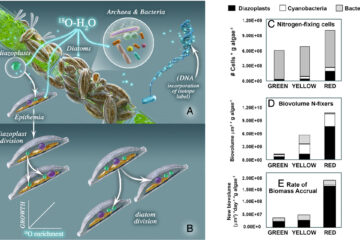Direct observation of permafrost degradation and rapid soil carbon loss in tundra
Evidence suggests that 5–15% of the vast pool of soil carbon stored in northern permafrost ecosystems could be emitted as greenhouse gases by 2100 under the current path of global warming. However, direct measurements of changes in soil carbon remain scarce, largely because ground subsidence that occurs as the permafrost soils begin to thaw confounds the traditional quantification of carbon pools based on fixed depths or soil horizons. This issue is overcome when carbon is quantified in relation to a fixed ash content, which uses the relatively stable mineral component of soil as a metric for pool comparisons through time. We applied this approach to directly measure soil carbon pool changes over five years in experimentally warmed and ambient tundra ecosystems at a site in Alaska where permafrost is degrading due to climate change. We show a loss of soil carbon of 5.4% per year (95% confidence interval: 1.0, 9.5) across the site. Our results point to lateral hydrological export as a potential pathway for these surprisingly large losses. This research highlights the potential to make repeat soil carbon pool measurements at sentinel sites across the permafrost region, as this feedback to climate change may be occurring faster than previously thought.


